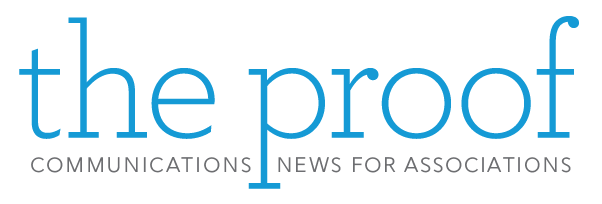
When asked which membership marketing channels they use, respondents to the 2022 Membership Marketing Benchmarking Report identified email, organic social media and association-sponsored events as the top three recruitment channels. When users of every channel were further questioned about the effectiveness of different strategies, the three channels identified as producing the most new members were email (48%), association-sponsored events (30%) and member referrals/member-get-a-member campaigns (28%). Organic social media, while the second most cited channel used by associations for membership marketing, was identified by only 14% as highly effective for recruitment of new members.
With email identified as a key component of a membership marketing campaign, it makes sense to ensure that email contacts are as effective as possible. Although marketing staffs spend time researching audiences, creating profiles and crafting messages, a formal campaign testing program provides data-based feedback about the effectiveness of different strategies and messages.
In “What Does Campaign Testing Mean in Marketing?” the author suggests that the ABTs of marketing be followed: always be testing. While not specifically directed at not-for-profit or association membership organizations, the article describes the two most common testing methods:
1. A/B Testing
- What it is: Testing two static elements. This could be a simple button color (red button vs. blue button) or two completely different landing pages (image-heavy landing page vs. punchy, copy-driven landing page).
- Good for: Quick learning, lower traffic numbers, introducing and testing new concepts.
2. Multivariate Testing
- What it is: Testing how multiple elements affect a specific goal. If you have four elements on a page, you can determine the most efficient combination of those four elements. Multivariate testing mixes and matches to find the most effective combination of elements.
- Good for: In-depth learning to design better landing pages and campaigns going forward…if you can get enough traffic to the page.
Before testing elements of a campaign, identify a hypothesis or measurable goal so you can evaluate effectiveness of each test. Software for marketing automation and ad platforms typically have testing capabilities built into the platform, but Google Optimize can be used to test website landing pages for free, or more robust platforms such as Optimizely, VWO, and Unbounce can be purchased and are good options identified by the author.
An example of an experiment to test an email subject line is:
Hypothesis: Including the discount price (e.g., 50% off) in the email subject line will improve the email open rate
Type of experiment: A/B test
Length of test: One email send
Measurable to determine winner: Email open rate.
Specific steps for A/B testing are described in more detail in “How to Use A/B Testing to Maximize Marketing Campaign Performance” and include:
- Determine which campaign elements you want to test: First, decide what to test. Look for landing pages, ads or other aspects that are underperforming, or evaluate past campaigns. Develop a hypothesis for why it is not performing well. For example, is CTA button is too small? Rank the elements to test and start with the top-priority item.
- Create two variations of that element: Once you decide what to test, choose or create two variants. For example, you might design two versions of a banner ad – one with an image and one without. Or you can test a new version of an element against an existing one. For instance, you could leave one landing page as-is and compare it with the same page, but with a larger CTA button.
- Establish a plan for measuring your results: Make sure you have a strategy in place for tracking the metrics of your campaigns. Define how big of a change would be statistically significant. If you’re testing something for an existing campaign element, you can use its current performance as a baseline.
- Set a timeline for your test: Determine how long you will run the test. Make sure your testing period isn’t too short or too long, as this can lead to inaccurate results.
- Run the test: Make sure you test one element at a time, so you know which element influenced the results. To avoid factors that may skew the results, run the two variations simultaneously and try to keep the groups seeing each version similar in size, demographics and other variables. If running a large test on a website page, you may randomly split your visitors between the two variations. If testing a marketing email, you can create two test groups of customers with similar or identical demographics.
- Check your results and implement changes: Once the test has run for the predetermined amount of time, you’ll have your results. If the test didn’t produce conclusive results, adjust your hypothesis and run another one. If a clear winner did emerge, implement the variation that performed better. Feed the data from your analysis into your data management platform to help you improve your current and future campaigns.
- Repeat the process: You can use A/B testing over and over to continue to refine your marketing campaigns for even better performance. After the first test, run another with the next element on your prioritized list. This element can be part of the same item you just tested, or part of another one. You should also repeat A/B testing as trends and customer preferences change over time.








